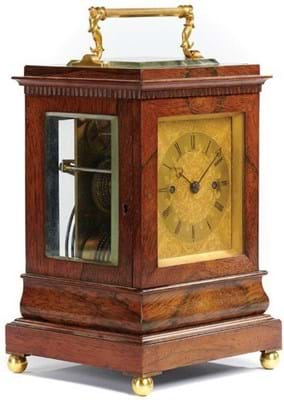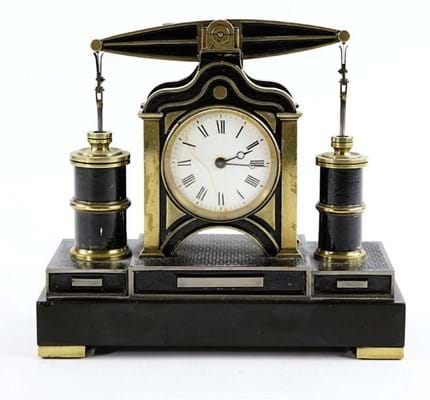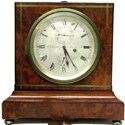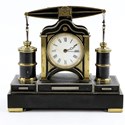1. A traditional clock very much to modern tastes, this c.1840 English rosewood carriage clock was offered at Mellors & Kirk (20% buyer’s premium) in Nottingham on March 21. Standing 9¼in (23.5cm) high excluding the gilt brass handle, it was marked for [William] Payne 163 New Bond Street London.
A later key wound the five-pillar chain-fusee movement but overall the clock was in fine conditon and, against a £5000-6000 estimate, it sold at £8000.
2. This early 20th century mantel chronometer is signed Thomas Armstrong & Brother Ltd, Manchester – a firm better known as a manufacturer of optical equipment.
Housed within a 10¾in (27cm) tall burr yew and brass inlaid case, is an eight-day chain fusee movement with a power reserve dial. It was given a £2000-3000 estimate at Bourne End Auctions (15% buyer’s premium) on March 6 when it sold at £6000.
3. From the series of ‘industrial’ automaton clocks produced by Guilmet of Paris in the late 19th and early 20th centuries, this 8in (20cm) wide beam engine clock was estimated at £600-1000 in Ewbank’s (24% buyer’s premium) sale in Woking on March 21. A compound pendulum in the eight-day timepiece rocks the beam up and down, appearing to operate the pistons in the flanking brass-bound chambers.
The auction house warned that the clock has not been running but the movement, stamped GLT for the maker, carried the number 211 which signifies an early example in the series which ran from No 52 to 4566. This, and the fact that the mechanism appeared complete, helped the piece sell at £3600.



















